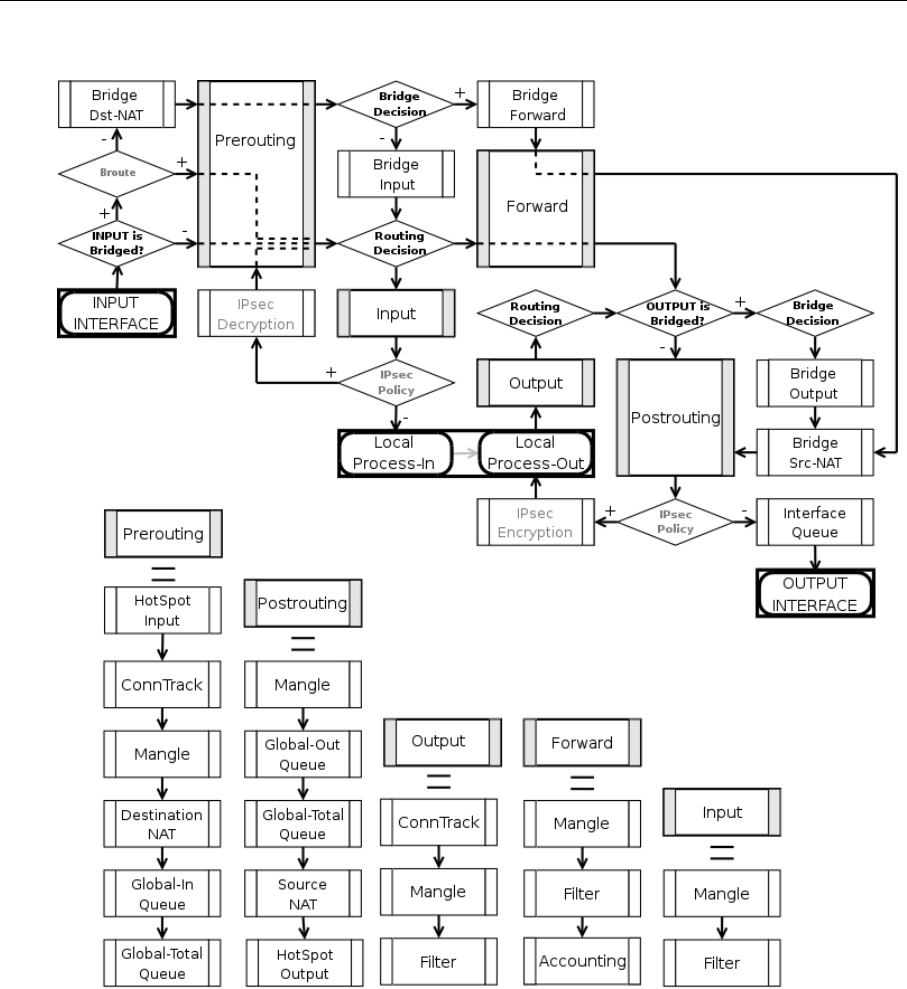
AT-WR4500 Series - IEEE 802.11abgh Outdoor Wireless Routers 211
RouterOS v3 Configuration and User Guide
The packet flow through the router is depicted in the following diagram:
Figure 32: Packet Flow Diagram
As can be seen on the diagram, there are five chains in the processing pipeline. These are prerouting,
input, forward, output and postrouting. The actions performed on a packet in each chain are
discussed later in this chapter.
Additional arrows from IPsec boxes shows the processing of encrypted packets (they need to be
encrypted / decrypted first and then processed as usual, id est from the point an ordinal packet enters the
router).
A paket can enter processing conveyer of the router in two ways. First, a packet can come from one of
the interfaces present in the roter (then the interface is referred as input interface). Second, it can be
originated from a local process, like web proxy, VPN or others. Alike, there are two ways for a packet to
leave the processing pipeline. A packet can leave through the one of the router's interfaces (in this case
the interface is referred as output interface) or it can end up in the local process. In general, traffic can
be destined to one of the router's IP addresses, it can originate from the router or simply should be
passed through. To further complicate things the traffic can be bridged or routed one, which is
determined during the Bridge Decision stage.


















